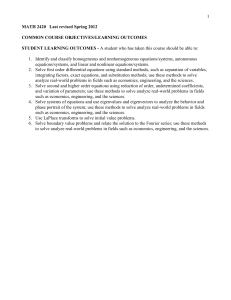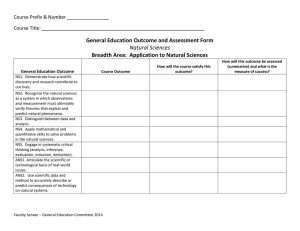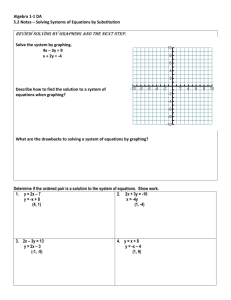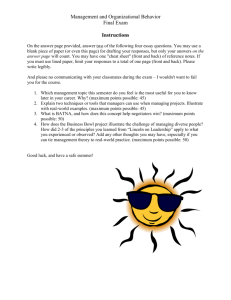Lecture 1:
advertisement
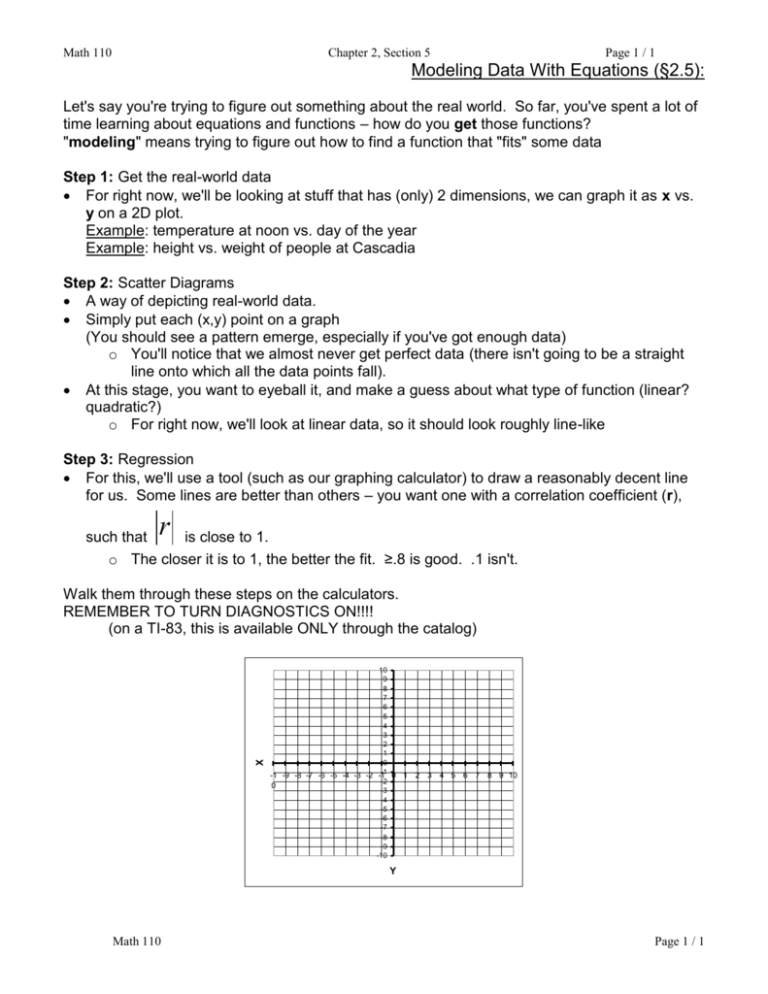
Math 110 Chapter 2, Section 5 Page 1 / 1 Modeling Data With Equations (§2.5): Let's say you're trying to figure out something about the real world. So far, you've spent a lot of time learning about equations and functions – how do you get those functions? "modeling" means trying to figure out how to find a function that "fits" some data Step 1: Get the real-world data For right now, we'll be looking at stuff that has (only) 2 dimensions, we can graph it as x vs. y on a 2D plot. Example: temperature at noon vs. day of the year Example: height vs. weight of people at Cascadia Step 2: Scatter Diagrams A way of depicting real-world data. Simply put each (x,y) point on a graph (You should see a pattern emerge, especially if you've got enough data) o You'll notice that we almost never get perfect data (there isn't going to be a straight line onto which all the data points fall). At this stage, you want to eyeball it, and make a guess about what type of function (linear? quadratic?) o For right now, we'll look at linear data, so it should look roughly line-like Step 3: Regression For this, we'll use a tool (such as our graphing calculator) to draw a reasonably decent line for us. Some lines are better than others – you want one with a correlation coefficient (r), such that r is close to 1. o The closer it is to 1, the better the fit. ≥.8 is good. .1 isn't. X Walk them through these steps on the calculators. REMEMBER TO TURN DIAGNOSTICS ON!!!! (on a TI-83, this is available ONLY through the catalog) 10 9 8 7 6 5 4 3 2 1 0 -1 0 1 -1 -9 -8 -7 -6 -5 -4 -3 -2 -1 -2 0 -3 -4 -5 -6 -7 -8 -9 -10 2 3 4 5 6 7 8 9 10 Y Math 110 Page 1 / 1

